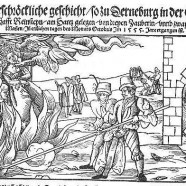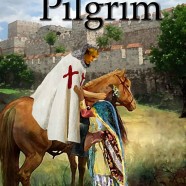Salve Deus Rex Judaeorum: Reflections on Good Friday
In this epic narrative, Lanier unfolds the drama of Christ’s passion as seen through the eyes of the women in the Gospels. Her searing poetry connects women’s suffering and oppression in male-dominated culture directly to Christ’s great mystery of redemption and triumph over the forces of ignorance and evil. Lanier upholds virtuous women as Christ’s true imitators.
Read MoreShakespeare’s Sisters—A Celebration of Renaissance Women Writers
April 23, 2016 marks the 400th anniversary of Shakespeare’s death with worldwide celebrations to mark his legacy. But what about the women? In her essay A Room of One’s Own, Virginia Woolf imagines the life of Shakespeare’s brilliant sister Judith, barred from the grammar school because of her sex and forced to hide her writing from her family. To escape a forced, arranged marriage, she runs away to London to seek her fortune in the theatre, only to end up pregnant, abandoned, and destitute. Out of despair, she kills herself. “It would have been impossible, completely and entirely...
Read MoreWitch Persecutions, Women, and Social Change: Germany 1560-1660
PART FOUR, Last in a seriesRead Part One, Part Two, and Part Three.The late 16th and early 17th century was an era of radical social, economic, and religious change. As women had much to lose, they had reason to rebel. And they remained a threat to the new social order. Art of this period often depicted women as insubordinate and wanton: beating their husbands, swilling wine, and lustfully dragging men to bed (Merchant 133). Reformer John Knox was of the opinion that if a woman was presumptuous enough to rise above a man, she must be “repressed and bridled” (Ibid 145). This was...
Read MoreWitch Persecutions, Women, and Social Change–Germany: 1560 – 1660
Burning witches, 1555. PART THREE (Read Part One and Part Two.) Major witch hunting panics arose in the 1560s throughout Europe and were especially severe in the German Southwest. Who were the victims of this mass hysteria? Even though witches were believed to come from all social classes, the trials focused on poor, middle-aged or older women (Merchant 138). Throughout Europe, midwives and healers were particularly suspect. These “wise women” who healed with herbs were held especially suspect, as they were often older women who had astonishing empirical knowlege, which their...
Read MoreWomen & the Crusades: guest post by Nan Hawthorne
Today’s guest post is by Nan Hawthorne, whose new novel Beloved Pilgrim explores the Crusade of 1101 from the perspective of a woman who went off to fight. During my own research of Hildegard von Bingen, I uncovered this short description of female crusaders from the Disibodenberg Chronicles, written by the monks of the abbey of Disibodenberg where Hildegard lived from the age of eight as a child anchorite:Not only men and boys, but many women also took part in this journey. Indeed females went forth on this venture dressed as men and marched in armour . . .–From the...
Read MoreBeyond the Marquee: Toward a Common History
This article of mine was originally published in the February 2011 issue of Historical Novels Review.Come and visit our panel “Are Marquee Names Really Necessary” with star authors Margaret George, C.W. Gortner, Susanne Dunlap, and Vanitha Sankaran at the 2011 Historical Novel Society North American Conference in San Diego, on Saturday, June 18.Recorded history is wrong. It’s wrong because the voiceless have no voice in it. These are the words of the late, great Mary Lee Settle, author of the classic Beulah Land Quintet, published in the 1950’s when both academic history and most...
Read More






